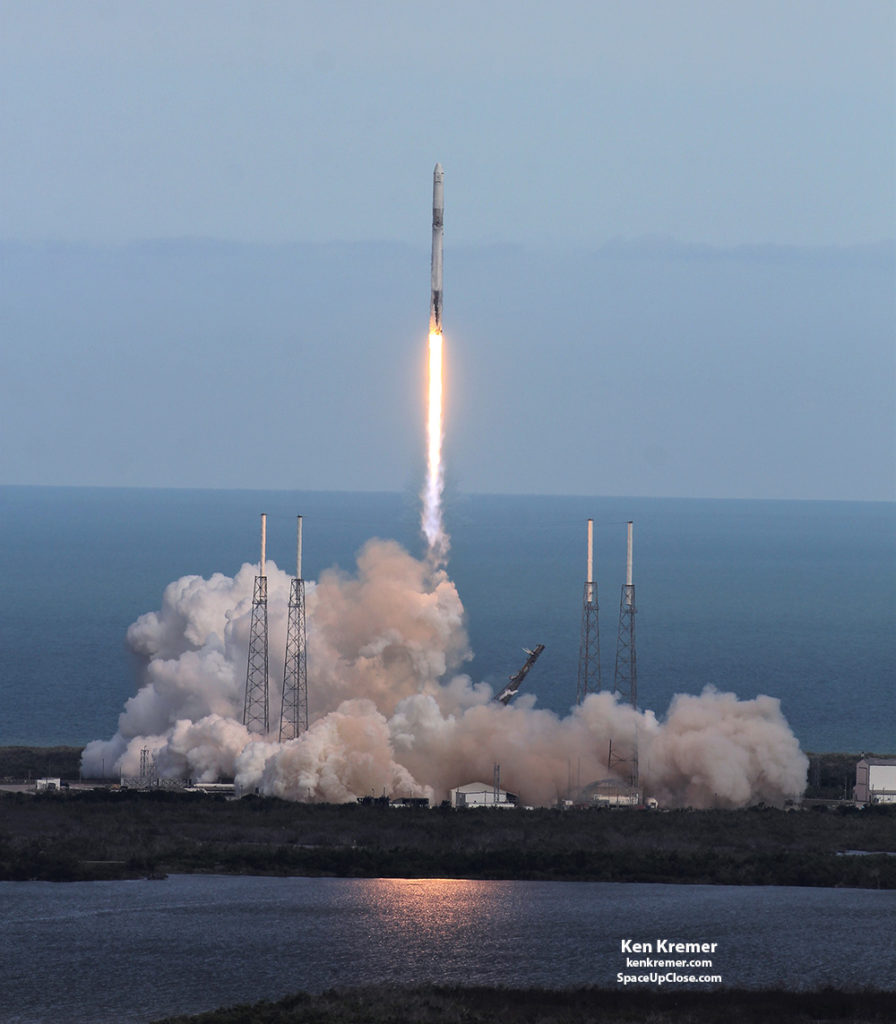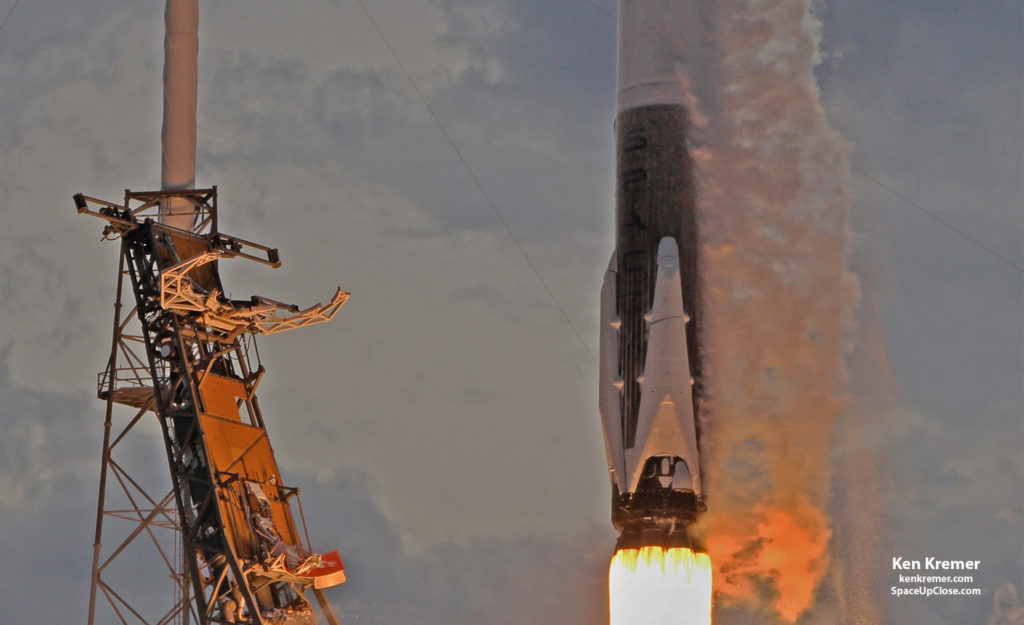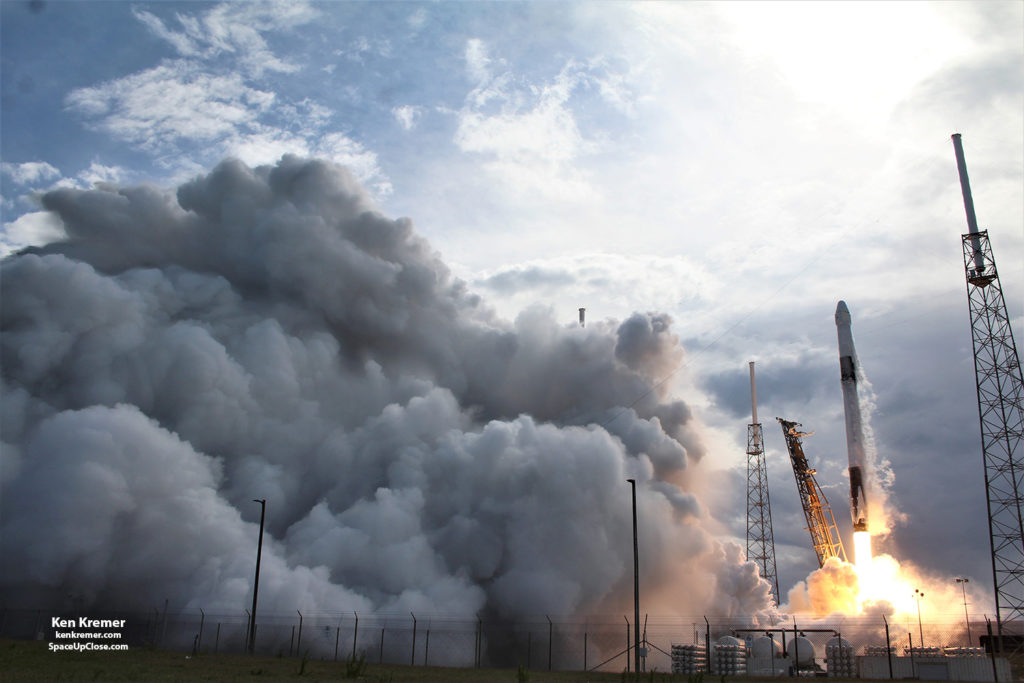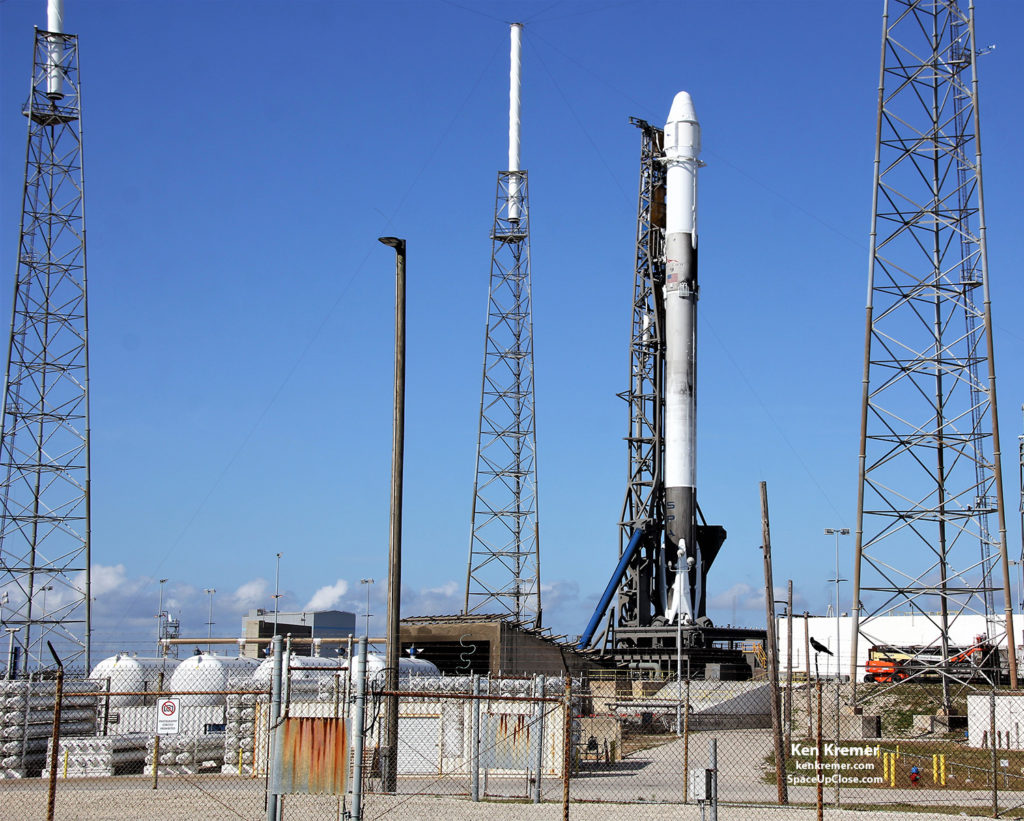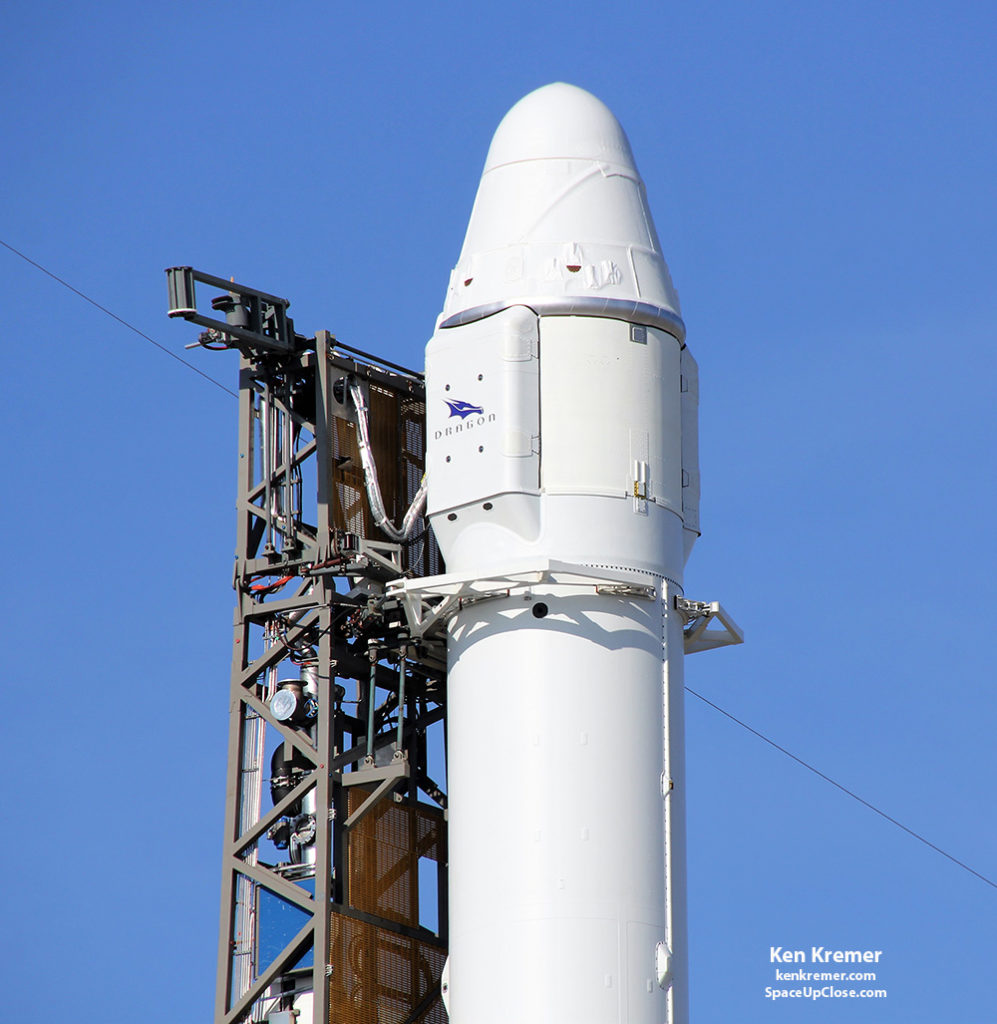April 2018
SPACE CENTER, FL – 3 tons of new
research and supplies are heading to the International Space Station following the
successful and stunningly beautiful Easter Monday (Apr. 2) blastoff of the fourteenth
SpaceX commercial resupply mission for NASA from the Kennedy Space Center
(KSC) in Florida.
mission utilized both a flight proven Falcon 9 booster and Dragon cargo vessel approved
by NASA managers for only the second time.
Dragon CRS-14 cargo freighter is jam packed with over 5800 pounds of science and supplies
for the six person multinational crew serving aboard that will support more
than 50 research investigations following a two day journey to the orbiting outpost.
commercial cargo freighter took place on time at 4:30 p.m. EDT Monday, April 2 from seaside Space
Launch Complex 40 at Cape Canaveral Air Force Station in Florida, during an
instantaneous launch window.
delivered Dragon to its intended preliminary orbit.
window was instantaneous, meaning that any delay would have forced a 24 hour
scrub to Tuesday, April 3.
deliver over 5800 pounds of science and research, crew supplies and vehicle
hardware to the million pound orbiting laboratory for the Expedition 55/56
crews during its month long stay.
mission and splashed down in the Pacific Ocean and the Falcon 9 first was
recycled from the CRS-12 mission and touched down softly and safely at LZ-1 at
the Cape.
with grid fins and landing legs, SpaceX did not attempt to recover this Block 4
version of the booster either on land or at sea. The droneship was not
dispatched.
the thrust and reentry and landing parameters to expand the envelope of return
operations.
the CRS-14 mission counts as the first of several planned for 2018.
after launch, Dragon reached its preliminary orbit, at which point it deployed its solar arrays and began a carefully choreographed series of
thruster firings to reach the International
Space Station.
total cargo on board amounts to 5836 pounds/2647 kilograms. Of that 3794
pounds/1721 kg is pressurized cargo and 2041 pounds/926 kg is unpressurized and
loaded in the Dragon truck.
pounds/344 kg of crew supplies, 2359 pounds/1070 kg of science investigations,
218 pounds/99 kg of spacewalk equipment, 326 pounds/148 kg of vehicle hardware,
108 pounds /49 kg of computer resources, 24 pounds/11 kg of Russian hardware.
April 4. Expedition 55 Flight Engineers Norishege Kanai of the Japan Aerospace
Exploration Agency, backed up by NASA astronaut Scott Tingle,
will supervise the operation of the Canadarm2 robotic arm for Dragon’s capture.
After Dragon capture, ground commands will be sent from mission control in
Houston for the station’s arm to rotate and install it on the bottom of the
station’s Harmony module.
facility to test materials, coatings and components, or other large
experiments, in the harsh environment of space. Designed by Alpha Space and
sponsored by the Center for the Advancement of Science in Space, the Materials ISS Experiment Flight Facility (MISSE-FF)
provides a platform for testing how materials react to exposure to ultraviolet
radiation, atomic oxygen, ionizing radiation, ultrahigh vacuum, charged
particles, thermal cycles, electromagnetic radiation, and micro-meteoroids in
the low-Earth orbit environment.
Adipose Reaction: Red or White (MARROW) will look at the effects of
microgravity on bone marrow and the blood cells it produces – an effect likened
to that of long-term bed rest on Earth. The extent of this effect, and bone
marrow’s ability to recover when back on Earth, are of interest to space
researchers and healthcare providers alike.
also is important for future long-duration space missions and the crews that
will need to grow their own food. The Passive Orbital Nutrient Delivery System
(PONDS) arriving on Dragon uses a
newly-developed passive nutrient delivery system and the Veggie plant growth facility currently aboard
the space station to cultivate leafy greens. These greens will be harvested and
eaten by the crew, with samples also being returned to Earth for analysis.
thunderstorms and their role in the Earth’s atmosphere and climate, as well as
upgrade equipment for the station’s carbon dioxide removal system, external
high-definition camera components, and a new printer for the station’s crew.
CRS-14, ULA, Boeing, Lockheed Martin, Orbital ATK and more space and mission
reports direct from the Kennedy Space Center and Cape Canaveral Air Force
Station, Florida.
Earth and Planetary science and human spaceflight news: www.kenkremer.com –www.spaceupclose.com –
twitter @ken_kremer – ken
at kenkremer.com


